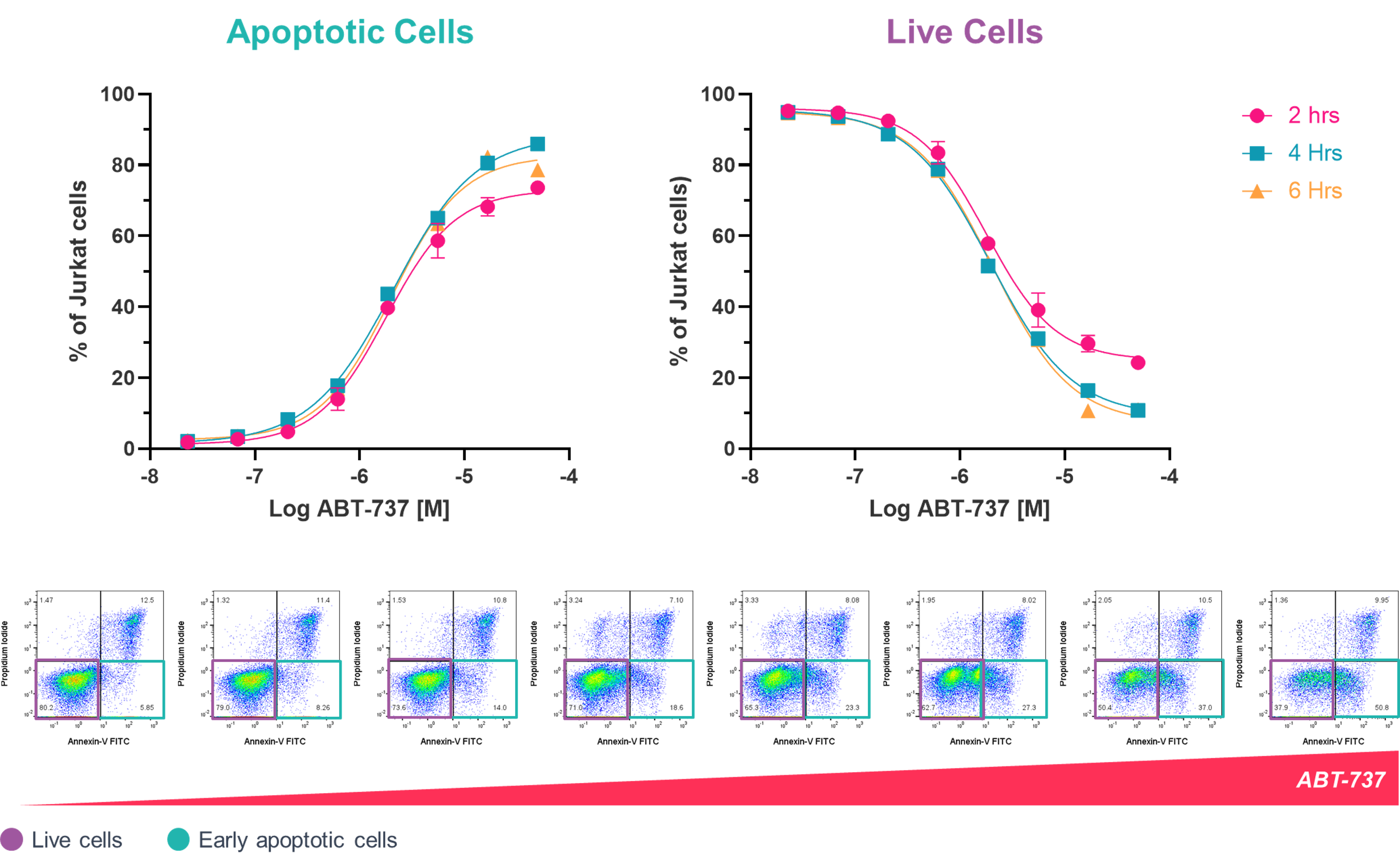- About
-
Solutions
-
Services
- Biosciences
- Chemistry
- Integrated Drug Discovery
- Computer Aided Drug Design
- Hit Identification
- Target Classes and Modalities
- Therapeutic Areas
-
A-Z
- A
- B
- C
- D
- E
- F
- G
- H
- I
- K
- L
- M
- N
- O
- P
- R
- S
- T
- V
- X
-
Services
- Library
- News & Events
- Careers
Flow cytometry apoptosis assay in Jurkat cells
ABT-737 is a small molecule drug that inhibits Bcl2, an apoptosis regulator. Jurkat cells were treated with a dilution series of ABT-737 and incubated for either 2, 4 or 6 hours, following which they were stained with Propidium Iodide and Annexin-V FITC for identification of apoptotic cells. Propidium Iodide is a dead cell marker, and Annexin-V binds to phosphatidylserine (exposed on outer membrane during apoptosis).

Figure 1: ABT-737 induces apoptosis in Jurkat cells. Following treatment with ABT-737, Jurkat cells were stained with Propidium Iodide and Annexin-V FITC and assessed by flow cytometry. Cells were initially gated based on FSC-A vs SSC-A, with doublets excluded using FSC-A vs FSC-H (data not shown). Cells were then examined using Annexin-V FITC vs Propidium Iodide (bottom panel), with a quadrant gate set using untreated and single stained controls. Apoptotic cells were classified as Annexin-V+Propidium Iodide– with live cells Annexin-V-Propidium Iodide–, with percentages plotted against ABT-737 concentration for generation of concentration-response curves (top panel).
Results shows that ABT-737 induces apoptosis in Jurkat cells, with a 4-hour incubation period determined as optimal for running the assay, as determined by the percentage of Jurkat cells identified as apoptotic.
Start your next project with Domainex
Contact one of our experts today